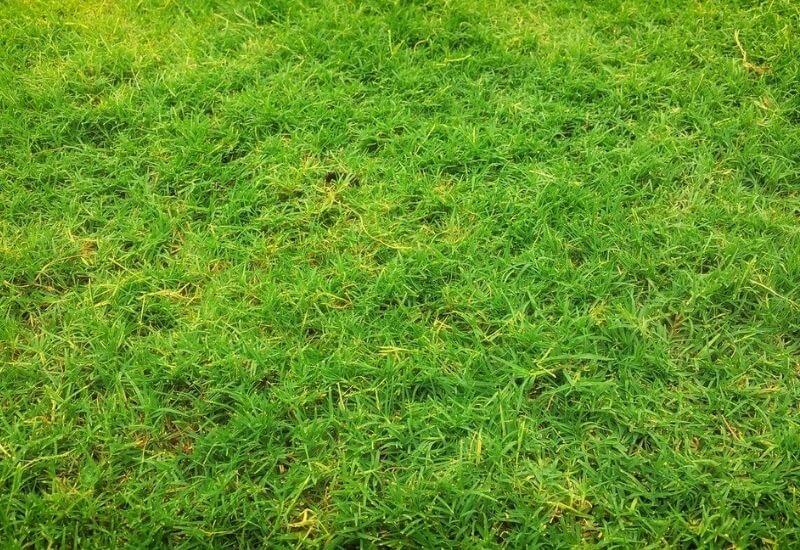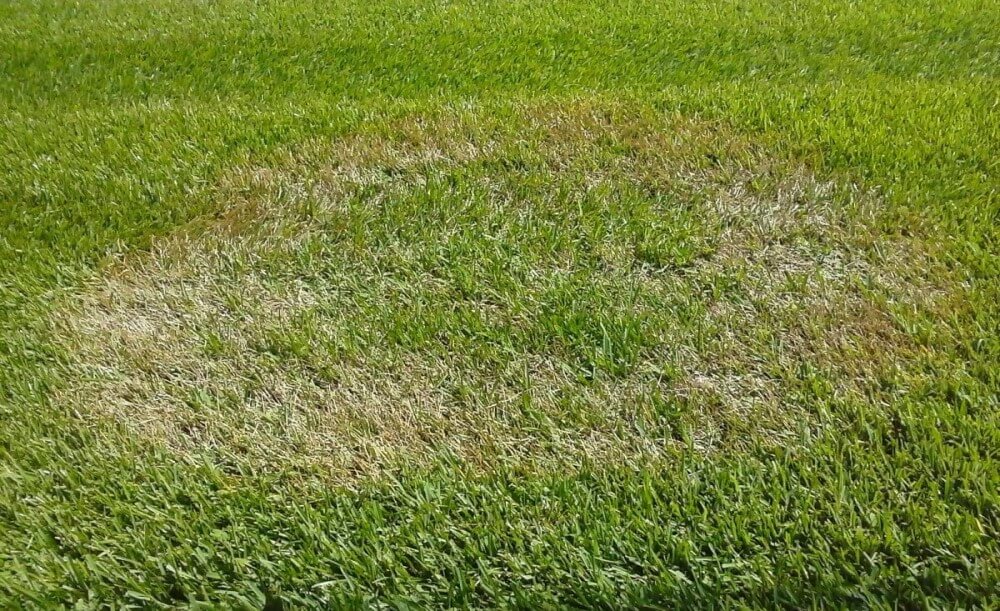Various diseases may attack your lawn during the year, ruining the perfect look of your green grass.
More so during the summer, when a lot of fungi thrive thanks to the high temperatures and high humidity.
One common disease that attacks lawns during this season is the brown patch lawn fungus.
What is it, how can you spot it, and how can you deal with the brown patch lawn fungus?
Read on to also discover a fungicide that you can use to get rid of the fungus and protect your lawn from future attacks.
Table of Contents
What is the Brown Patch Lawn Fungus?
This fungus is one of the most common diseases that affect turfs across the United States.
It’s caused by the Rhizoctonia Solani fungus, which manifests in high humidity and hot temperature weather.
This is a fungus that lies dormant during winter and only shows symptoms during the summer.
It affects both cold and warm-season grasses. Some of the most affected cold season grasses are perennial ryegrass, bentgrass, bluegrass, and tall fescue.
Zoysia grass, St.Augustine grass, and Bermuda grass are some of the warm season turfs that can be infected.
The brown patch lawn fungus can attack suddenly. One night your lawn may be completely fine, only for you to wake up to brown patches the next morning.
This disease doesn’t necessarily kill the grass. Instead, it makes it thinner and brown in color. With time, your grass may recover health and the green color.
However, in some cases, this fungus can kill your grass.
The good news is that you don’t have to sit around and wait for the fungus to go away. You also don’t want to risk having it spread to more areas of your lawn!
There are various practices and products you can utilize to keep your lawn healthy and get rid of the fungus. You’ll also be able to prevent future outbreaks.
But first, let’s see how you can spot this unsightly disease.
How to Spot the Brown Patch Lawn Fungus

As the name suggests, this disease causes brown patches on your lawn. Of course, there are many other lawn diseases that have the same effect, but this name is reserved for the infection caused by this fungus.
This fungus affects the leaf blades, sparing the roots.
You’ll notice brown spots on the leaves, which will then bleed into each other to completely cover the blade.
This symptom spreads from one blade to the next until a large patch of your lawn has been affected.
If you wake up to find an irregular brown patch of grass on your lawn surrounded by a dark ring, that’s your sign that you have brown patch lawn fungus to deal with.
These patches usually show up in the morning because of the long hours of high humidity during summer nights.
When dew settles on the blades for about ten hours, it creates the perfect environment for the fungus to thrive.
How to Get Rid of the Brown Patch Lawn Fungus
Once your lawn has been affected by the brown patch lawn fungus, you may have to wait it out. This is because there’s not much you can do to get rid of it immediately.
However, you can take a few measures to ensure it doesn’t spread a lot and also to salvage your grass so that it doesn’t end up dead.
Here are a few tips on how to curb its spread or to keep it from coming back next season:
Maintain Good Lawn Care Practices
Weed control, mowing your lawn regularly, and improving air circulation can keep brown patch lawn fungus away or get rid of it sooner.
These are basic lawn care practices that you should be careful not to skip, especially during the summer.
By mowing and keeping your grass at its appropriate length, you’ll keep the fungus from spreading across a large area.
It also promotes aeration, which keeps the dew from the blades, preventing the creation of a suitable environment for the fungus.
When it comes to irrigation, do it sparsely. Since the weather is already humid, exposing your grass to more water will only make it more susceptible to the fungus.
Watch How Much Fertilizer You Use
Using too much or too little fertilizer puts your lawn at risk of this fungus. You should especially limit your usage of nitrogenous fertilizer as it can lead to a major outbreak of various lawn diseases.
Use a Fungicide
Finally, you can get extra help from a fungicide. It’s best to apply a fungicide when your grass is healthy so as to keep away any possible fungus.
But if you’re too late and the brown patch lawn fungus attacks, you can also use a fungicide to curb its spread and speed up its cure.
When using fungicides, beware of how long it lasts on your grass so as to reapply when necessary.
Here’s a top-rated fungicide that you can get today to protect your grass and rid of the brown patch lawn fungus faster:
BioAdvanced Fungus Control for Lawns
This is a fungicide that gets absorbed into the grass through the blades and roots and protects against brown patch lawn fungus. It also provides protection against other kinds of lawn diseases, including dollar spot, red thread, and rust.
Features
- It’s rainproof, which means that it won’t get washed away in the rain. This is because it gets absorbed into the grass and remains active for 30 days.
- It can kill existing fungus, therefore helping to get rid of brown patch lawn fungus faster. This also prevents further spread of the infection.
- This fungicide can cover 5000sq.ft of lawn area effectively. All you need to do is attach the sprayer to a water hose and apply it as you walk backward.
If you’re preventing brown patch lawn fungus, 2.1lbs will be enough for every 1000 square feet. But if your lawn is already infected, use 3.5lbs to cure 1000sq.ft.
Conclusion
The best way on how to deal with the brown patch lawn fungus is to take good care of your lawn.
Mow regularly, watch how much fertilizer you use, don’t over irrigate, and use a fungicide to keep the fungus away.
With these tips, you’ll be able to maintain your green lawn through the hot and humid months when it’s most vulnerable.


